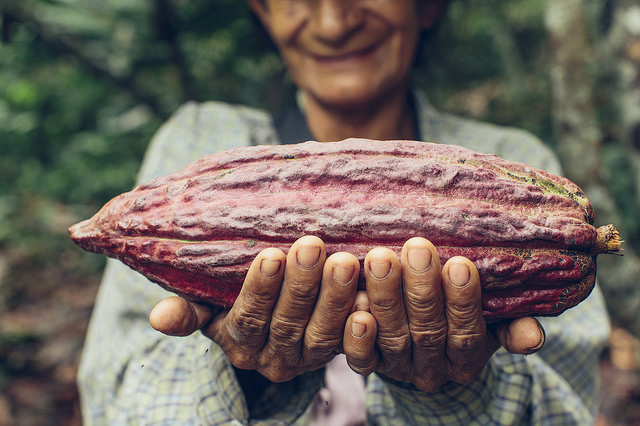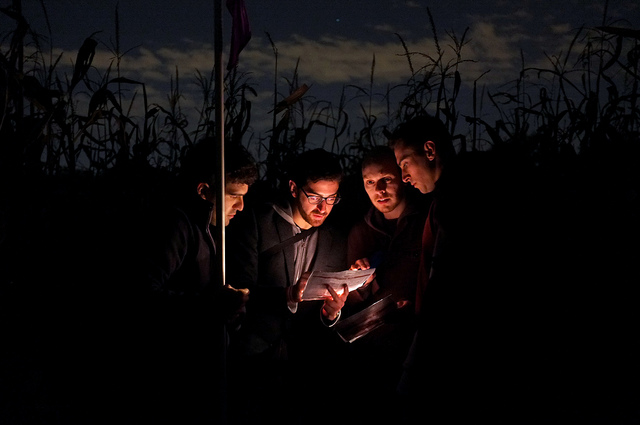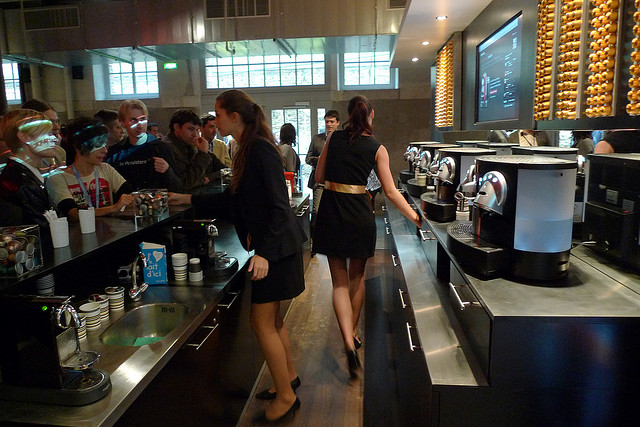Unlock the Magic in Your Story Now
Get the Free 20 questions to Ask Before Launching Your Idea workbook when you sign up for occasional updates.
Get the Free 20 questions to Ask Before Launching Your Idea workbook when you sign up for occasional updates.
Articles filed in: Marketing
How To Find Tomorrow’s Customers
filed in Marketing, Storytelling, Strategy
 Most businesses, whatever their size are focused on growth. We want more leads, more fans, readers or subscribers, who will become more customers, resulting in more sales and more profits.
Most businesses, whatever their size are focused on growth. We want more leads, more fans, readers or subscribers, who will become more customers, resulting in more sales and more profits.
We usually have a plan to get them, which involves cultivating the people we hope will be tomorrow’s customers. And all the while we are doing that we often forget to serve the people who have already showed up—the ones who have said, “we’re here, take us to where we want to go”.
So we move on to the next thing. We innovate and build and create for people who may never arrive, instead of understanding the problems to solve for the people we know.
It turns out that we find tomorrow’s customers by relentlessly focusing on the needs of the customers we have today.
Image by Jerry Wong.
Value Creation And Stories To Believe In
filed in Marketing, Storytelling
 Just 574 To’ak chocolate bars were produced in 2014 using hand sorted, heirloom cacao beans harvested from rare Ecuadorian trees. Each bar is engraved with an individual number, packaged in a Spanish elm wooden box and comes with a specially designed tasting tool (touching the chocolate with your fingers can alter the flavour). A single 50gram bar will set you back $260.
Just 574 To’ak chocolate bars were produced in 2014 using hand sorted, heirloom cacao beans harvested from rare Ecuadorian trees. Each bar is engraved with an individual number, packaged in a Spanish elm wooden box and comes with a specially designed tasting tool (touching the chocolate with your fingers can alter the flavour). A single 50gram bar will set you back $260.
Who decides what a chocolate bar is worth and on what evidence do they base that decision?
How do we know when to pay more or less?
Value is in the heart of the beholder. More often than not value is perceived, not calculated. It’s irrational, intangible, unpredictable and messy. The customer is not paying for the rare beans or even the tasting experience— she’s paying for the joy that believing the story brings her.
Value creation is the responsibility of the marketer. It’s our job to give people stories to believe in, not just advantages to measure.
Image by USAID.
The Most Important Marketing We Do
 Do you remember that time when the popular kid pushed you back into line and told you to and wait to be picked, or the day when your teacher told you not to speak up? Will you ever forget the moment your boss told you that you should suck it up, or the night when your peers turned away and urged you to wait, be patient, to settle?
Do you remember that time when the popular kid pushed you back into line and told you to and wait to be picked, or the day when your teacher told you not to speak up? Will you ever forget the moment your boss told you that you should suck it up, or the night when your peers turned away and urged you to wait, be patient, to settle?
These interactions are part of your story, you carry them with you—they are hard to shake off.
They are part of my story too and those of your partner, family, friends, colleagues and the people you admire and want to emulate.
Even in this age of abundance many of us have fooled ourselves into thinking that we don’t have everything we need to do work that matters. Our self-talk (the seeds of which began with those moments) makes us get in our own way.
Mostly what we need to start anything, to become something and to do our best work is permission—new defining moments.
Seth Godin’s latest book, What To Do When It’s Your Turn is here and if you’re ready to give yourself permission you should buy it. I first read it as a galley proof—uncut and unbound while travelling for work and away from home. I spread the pages across the bed in the hotel room late one evening, began reading and couldn’t stop.
Seth’s work is a gift. He doesn’t write to write, or because he has to—he writes to change people.
This book gives you the jump start you need. No pixel is wasted, there is something to inspire, encourage and provoke you on every page.
The most important marketing we do is in the stories we tell ourselves about what’s possible and why it matters. If we don’t get that part right what chance have we got of connecting with, changing or serving a single soul?
It’s your turn, it always was. Now you know.
Image by Bill Harrison.
Persuasion, Proof And The Place You Want To Be
 As marketers we have historically relied on material advantages to differentiate our products and services, then used them to persuade customers to buy them. If your product is lighter or more energy efficient, the thinking goes, then you’re giving customers a logical reason to choose your brand over your competitor’s.
As marketers we have historically relied on material advantages to differentiate our products and services, then used them to persuade customers to buy them. If your product is lighter or more energy efficient, the thinking goes, then you’re giving customers a logical reason to choose your brand over your competitor’s.
In an age of product parity quality is a given and we rely on facts to persuade much more than we should. Data helps people to affirm their irrational choices but it does not drive their decisions.
Your goal isn’t to prove that you’re better—it’s to be so good that people are not even considering another option.
Image by Len Radin.
What’s The Best Way?
 When I was a new mum thinking about ‘the best way’ to raise my son to do the things that babies of his age were supposed to do, occupied a fair amount of my time. I worried about the best way to settle him to sleep and the best way to wean him. I graduated to caring about the best way to potty train him and the best way to teach him how to hold a pencil. There was no shortage of opinions about the best way to do all of these things then and now.
When I was a new mum thinking about ‘the best way’ to raise my son to do the things that babies of his age were supposed to do, occupied a fair amount of my time. I worried about the best way to settle him to sleep and the best way to wean him. I graduated to caring about the best way to potty train him and the best way to teach him how to hold a pencil. There was no shortage of opinions about the best way to do all of these things then and now.
And so it goes for the work that we do. We try hard to mitigate against making a mistake. We want to find the best way to generate ideas, market our products and connect with our customers, because we care about getting it right. But if you waited until you were sure you had the best way—the obvious solution, you’d never make a start. The best way to do anything is to begin, then to adjust your course based on what happens next.
The worst way is do nothing.
Image by Josh Kesner.
Before You Create Marketing
filed in Marketing, Storytelling, Strategy
 Recognise that’s it is not your job to create marketing. It’s your job is to as Peter Drucker said,
Recognise that’s it is not your job to create marketing. It’s your job is to as Peter Drucker said,
to create and keep a customer.
Before Nespresso people paid for coffee by the jar or went to Starbucks. Before iTunes people waited for CDs to be released and shipped. Before Kindle we needed bookcases and took one book on holiday.
What happens in people’s lives because your product or service exists? That’s a more important question to ask than how many brochures will we print. You can worry about getting George Clooney to endorse you later.
Image by Eddie Codel.
The Relationship Between Curiosity And Business Growth
 Whenever I visit the tiny local florist I am the only customer and the most bizarre thing happened when I stopped off there last Friday evening. The entire floor was filled with buckets and buckets of multi-coloured roses. It was so full there was barely room to navigate to the register to pay. I thought they must be for a Saturday morning wedding and asked the florist (who is also the business owner) the question.
Whenever I visit the tiny local florist I am the only customer and the most bizarre thing happened when I stopped off there last Friday evening. The entire floor was filled with buckets and buckets of multi-coloured roses. It was so full there was barely room to navigate to the register to pay. I thought they must be for a Saturday morning wedding and asked the florist (who is also the business owner) the question.
She told me that all 110 bunches were already sold, but not to a wedding party. They were reserved for a guy who bought 110 bunches of 10 roses every Friday evening.
“What does he do with a thousand roses every week?” I asked.
“I have no idea,” she said, as she shrugged her shoulders.
Those Friday evening roses are worth quite a bit to her business, $3,000 is probably more money than she takes in for most of the rest of the week.
Being twice as curious about your customers as you are about your products and services and caring enough to understand what they do and why will help you to serve them better. And the flipside is it may even help you to find new opportunities to grow your business.
Image by Farrukh.
How Does Your Marketing Really Make People Feel?
filed in Marketing, Storytelling, Strategy
 Imagine it’s a busy Thursday morning and you’re replying to the emails that came in overnight from people you were eager to hear from, when out of nowhere an unsolicited sales email interrupts your flow. Of course it’s just one email, it only takes a second to delete it, so where’s the harm in a business owner casting her net as wide as possible? After all someone might bite.
Imagine it’s a busy Thursday morning and you’re replying to the emails that came in overnight from people you were eager to hear from, when out of nowhere an unsolicited sales email interrupts your flow. Of course it’s just one email, it only takes a second to delete it, so where’s the harm in a business owner casting her net as wide as possible? After all someone might bite.
The problem we’re faced with as business owners and marketers is that just one email from lots of people trying to cut through the clutter creates more clutter. And people, (the ones you are hoping will become your customers) who are on the receiving end are jaded by it all. Here’s the email that landed in my inbox. How would it make you feel?
——————————————————————————————————————————————————————
Good Morning.
[You don’t know me, so who gave you permission to interrupt my day?]
In August we launched our 27th Annual edition of XYZ Magazine.
[Why should I care?]
XYZ magazine is a high quality “coffee Table” styled magazine, which is kept for many years.
[How does this help me?].
The 2014/15 issue is on Sale for a year at newsagencies, we also sell it at the XYZ Exhibition and the following year we give the magazine out to Brides attending the Exhibition, (while stocks last).
[What are you trying to sell me?]
So, In essence you are receiving three years of exposure for the price of one.
[How do you know ‘exposure’ to your readers is my problem?]
We are running a SPECIAL OFFER until the 18th of December 2014!
[This is not my emergency.]
No payments are due until 2015 and we can offer payment packages.
[You still haven’t told me what you’re selling and why it matters to me.]
The XYZ Exhibition will be held on the 1st of March 2015 at the XYZ Hotel.
[Not sure why I need to know.]
If you would like further information on XYZ please either email me or call me on………
[Delete.]
Have a lovely day.
[Do you mean that?]
—————————————————————————————————————————————
Traditional advertising and PR’s obituary is constantly written and re-written, but we’re so scared of being invisible that we continue to use marketing tactics that do nothing to help grow our businesses. What’s worse than being invisible is alienating people.
The best marketing leads with the customer’s story. Every one of us has the opportunity to do that and to practice empathy, even if we don’t have the budget for a beautiful two minute film.
[Update: Apparently the link doesn’t work in the US. This is an unofficial version without the original soundtrack.]
Image by Cedric Lange.
The Value Of Connection In A Low Touch World
 What matters in a world where….we can tell a device to order the shopping, place our coffee order without speaking, have a conversation involving thumbs and zero eye contact and before we know it, get to our destination in a driverless car?
What matters in a world where….we can tell a device to order the shopping, place our coffee order without speaking, have a conversation involving thumbs and zero eye contact and before we know it, get to our destination in a driverless car?
What’s scarce today will be even more scarce tomorrow. And that’s our opportunity.
Image by Lena Vasiljeva.
 As marketers we tend to get lost in the tactics like designing flyers, scheduling tweets and growing a Facebook following—this makes us forget the more important stuff.
As marketers we tend to get lost in the tactics like designing flyers, scheduling tweets and growing a Facebook following—this makes us forget the more important stuff.